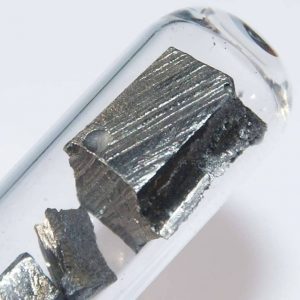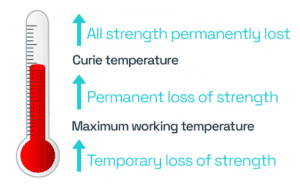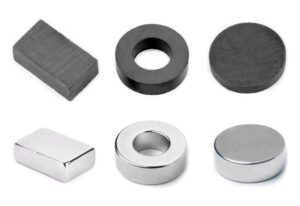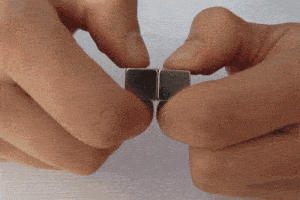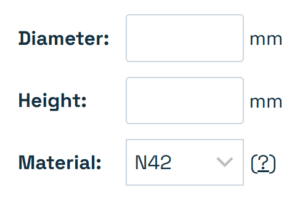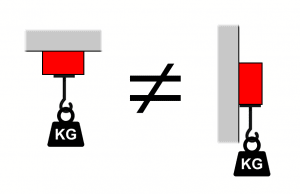How to shield the magnetic field
Can the magnetic field be shielded so that the magnet only attracts from one side? How to make two magnets stop attracting or repelling each other? Do you need to protect a sensitive device from the effects of a magnetic field?
When you place wood, plastic, glass, aluminium or paper between the magnet and the paper clips in the picture, the magnet will continue to attract the paper clip. If you put a steel knife under the magnet, the paper clips will fall:
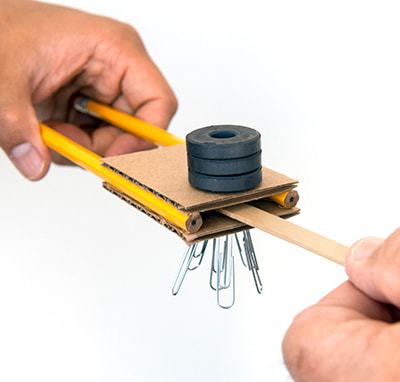
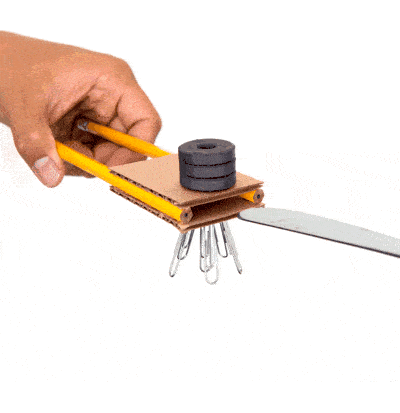
The knife shielded the magnetic field and the paperclips stopped being attracted. How is it possible?
Deflection of lines of force
Magnetic field lines of force always form closed loops. They pass through entire magnet, exiting the north pole and entering the south pole. A higher density of field lines means a stronger magnetic field. The magnetic field is strongest inside the magnet and at the poles. As the distance from the magnet increases, the density of field lines decreases.
No material can stop magnetic field lines of force. However, there are materials such as steel that can deflect them. If you place a steel sheet next to the magnet, the lines of force will begin to pass through the sheet to the south pole, which represents a path of least resistance for them. There are no lines of force to the right of the metal sheet, therefore the magnetic force will not act on metal objects behind the metal sheet.
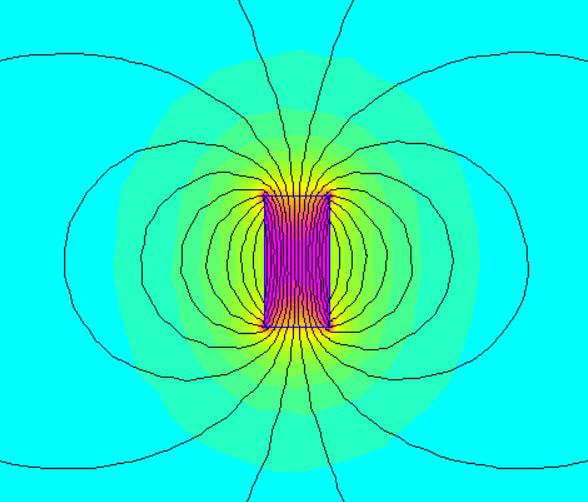
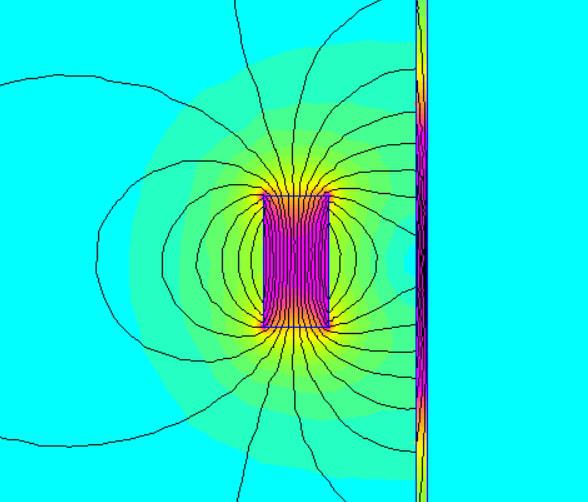
If you need to protect a sensitive device from a magnetic field, you can also place it in a steel case. The lines of force will pass through the package and bypass the device:
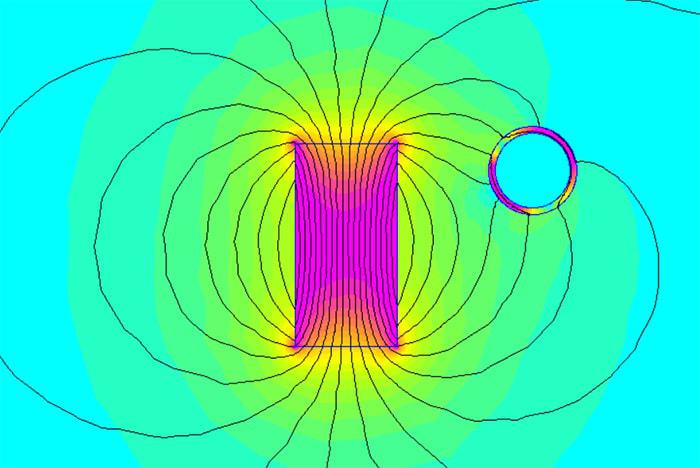
Which materials do they shade?
Any ferromagnetic materials:
- iron
- nickel
- cobalt
- materials containing these metals (such as steel or ferrite)
- some compounds of rare earth metals (e.g. CrO2)
All other materials (non-magnetic metals, wood, plastic, glass, cardboard, polystyrene…) have no effect on magnetic lines of force.
Any material that is attracted to magnets can shield the magnetic field. For strong magnets, steel is most often used, because it is easily available and can absorb a large amount of lines of force. But beware, some types of stainless steel are not ferromagnetic and cannot be used for shielding. Special shielding material MuMetal is most often used for weak magnetic fields.
Not all ferromagnetic materials are equally effective. Important properties are high permeability and saturation point.
Permeability
Magnetic lines of force try to get from the north to the south pole by the path of least resistance. Under normal circumstances, they will choose the shortest route. At the same time, they keep their distance from other lines of force as if the lines of force repel each other.
Permeability measures how good a material is a “conductor” of a magnetic field. Magnetic field lines travel easily through highly permeable materials. Therefore, they sometimes prefer the path through the permeable material, even if it is longer and closer to other lines of force:
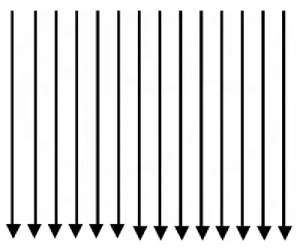
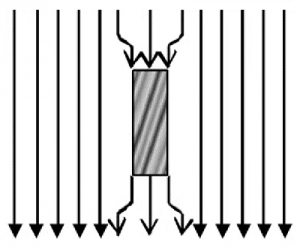
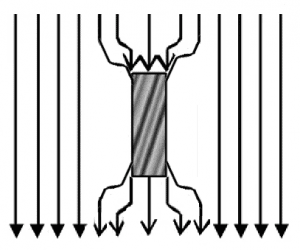
The more permeability a material has, the better it attracts the surrounding lines of force. Steel has 2,000 times more permeability than air. The specialized MuMetal magnetic shielding material has a permeability up to 300,000 times that of air.
Saturation point
The saturation point determines the maximum density of lines of force that the material can support. If there are too many lines of force, the material becomes saturated and cannot accept additional lines of force, reducing its shielding effect. Highly permeable materials tend to saturate faster than less permeable materials.
MuMetal is ideal for weak fields because, thanks to its high permeability, very few lines of force pass through. However, with strong magnetic fields, saturation will occur and excess lines of force will not be shielded. Steel can absorb many more lines of force, but it has less permeability and will always let a small part of the magnetic field through.
| Air | Steel | MuMetal | |
|---|---|---|---|
| Relative permeability | 1 | 2 000 | 300 000 |
| Saturation point | infinity | 22 000 Gauss | 8 000 Gauss |
In most cases, steel is a suitable material. We also use steel to shield packages when sending strong magnets through the mail.
If you have a problem with saturation, you can try:
- Using a thicker sheet. However, it will increase the weight and cost of the shielding material.
- Use a material with a higher saturation point (for example steel instead of MuMetal). However, it will reduce permeability.
- Place the sheet away from the magnet, where the magnetic field is weaker. But then the sheet must be bigger.
- Turn the sheet perpendicular to the earth’s magnetic field, which otherwise also contributes to saturation.
More tips from orodian.com
Close the circuit
If you want to shield a magnet or sensitive device, surround it with shielding material on all sides (not just towards the magnet). This creates a closed magnetic circuit that provides better shading.
Limit the gaps
Allow the magnetic field lines to pass smoothly from one sheet to another. Lines of force can overcome a small air gap, and larger gaps can weaken the shielding effect. If you use sheets, they should overlap: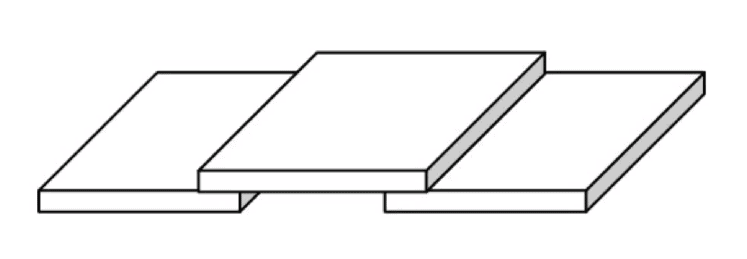
The result will be even better if you press the sheets together and increase the contact area.
Multiple layers
Several thinner layers shade better than one thick layer. You can separate the shielding sheets with plastic, cardboard or other material:
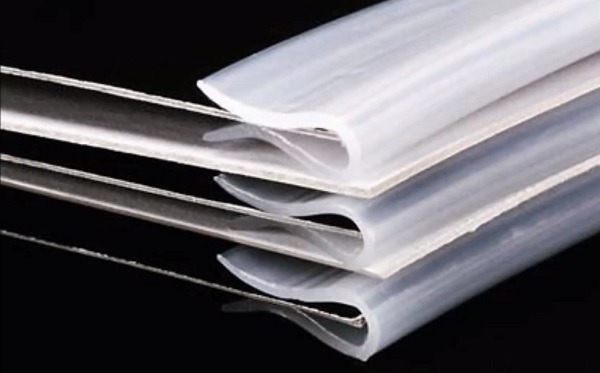
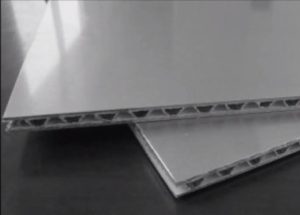
Rounded edges
Lines of force cannot suddenly change direction by 90°. At sharp edges, they will continue straight and leave the sheet. Try to round the edges of the sheets as much as possible.
Smaller is better
It is better to cover sensitive objects with a smaller shield. A large shield significantly changes the path of force lines, for which it needs high permeability.
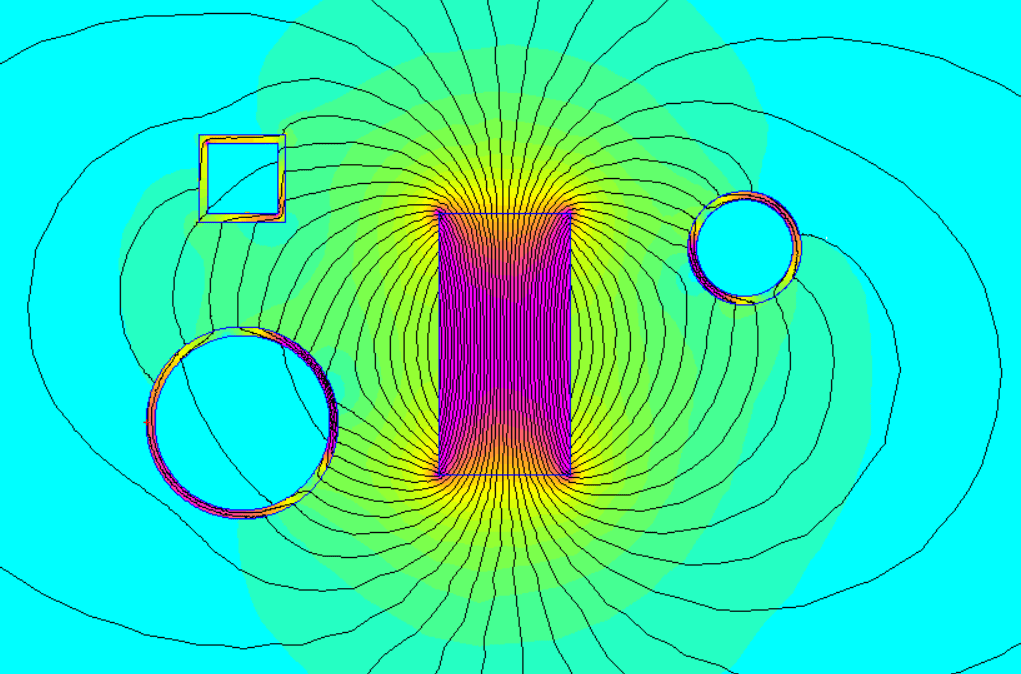
High frequency
With an alternating magnetic field, the permeability of the shielding material is lower. The shielding effect starts to weaken for most materials at frequencies around 1kHz:
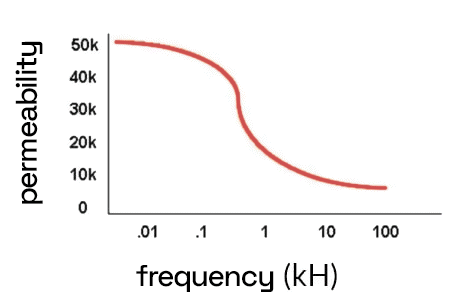
Finemet (several kHz frequency) or CobalTex (several MHz frequency) shielding materials are suitable for high-frequency fields.
Steel + MuMetal
If you need high saturation point and high permeability at the same time, you can use a combination of steel and high permeability material:
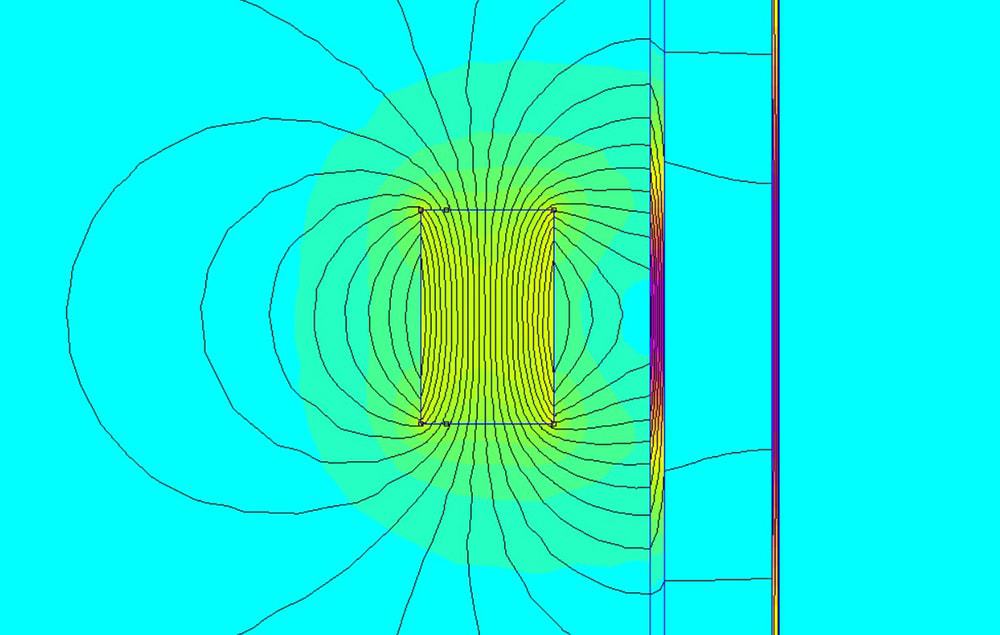
Other materials
Although MuMetal is the most common choice for weak fields, there are alternatives on the market with varying permeability and saturation point. You can try:
- Giron
- Magnet Shield
- PaperShield
- Shieldene (stainless)
- Jointshield
Two magnets
How to shield attractive force
If you need two magnets to stop attracting each other, the situation is more complicated. When you place a sheet of steel between the magnets, they will stop interacting with each other, but both will be attracted to the sheet between them. Since the sheet is closer than the other magnet, the force between the magnet and the sheet will be even greater than the force between the magnets before. Ultimately, the magnets will be attracted towards the other magnet even more strongly than before.
Is there a shielding material that doesn’t attract magnets?
No. Any materials with high permeability will attract magnets. If the material is not attracted to the magnets, it cannot influence the path of the magnetic field lines.
This problem can be solved by using two sheets. The magnet on the left will be attracted to the left sheet. The magnet on the right will be attracted to the right sheet. The magnets and sheets no longer attract each other. Between the magnet and the sheet, you can place a filling material, for example polystyrene. Or place the sheet directly on the magnet. But then saturation can occur, it depends on the strength of the magnet, the thickness of the sheet and the material from which the sheet is made.
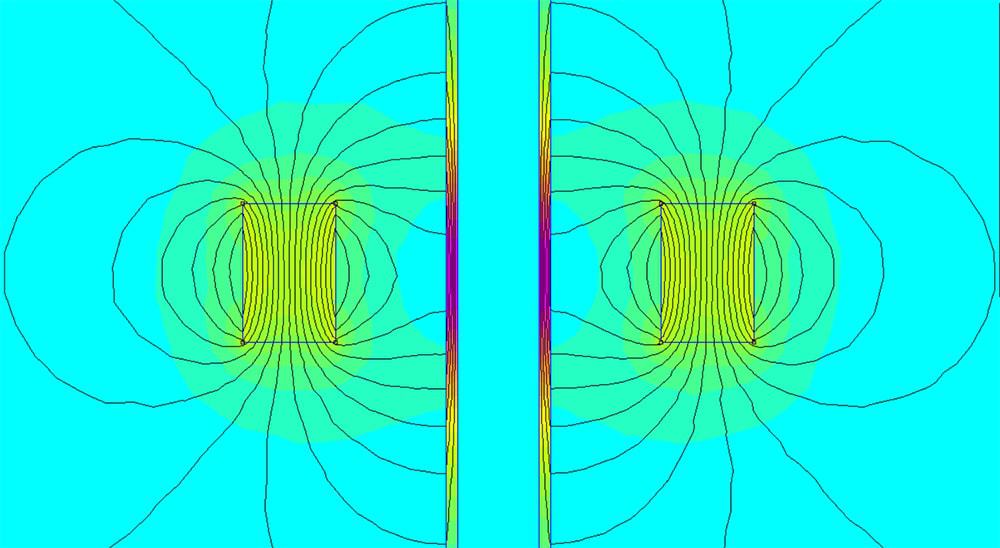
How to shade the repulsive force
For repulsive magnets, just use one sheet. With adequate sheet thickness and distance between magnets, it can be achieved that the attractive force between the magnet and the sheet is the same as the repulsive force between the magnets. The forces cancel each other out and the magnets stay in place.
Of course, it is still possible to use two sheets as in the previous case.
